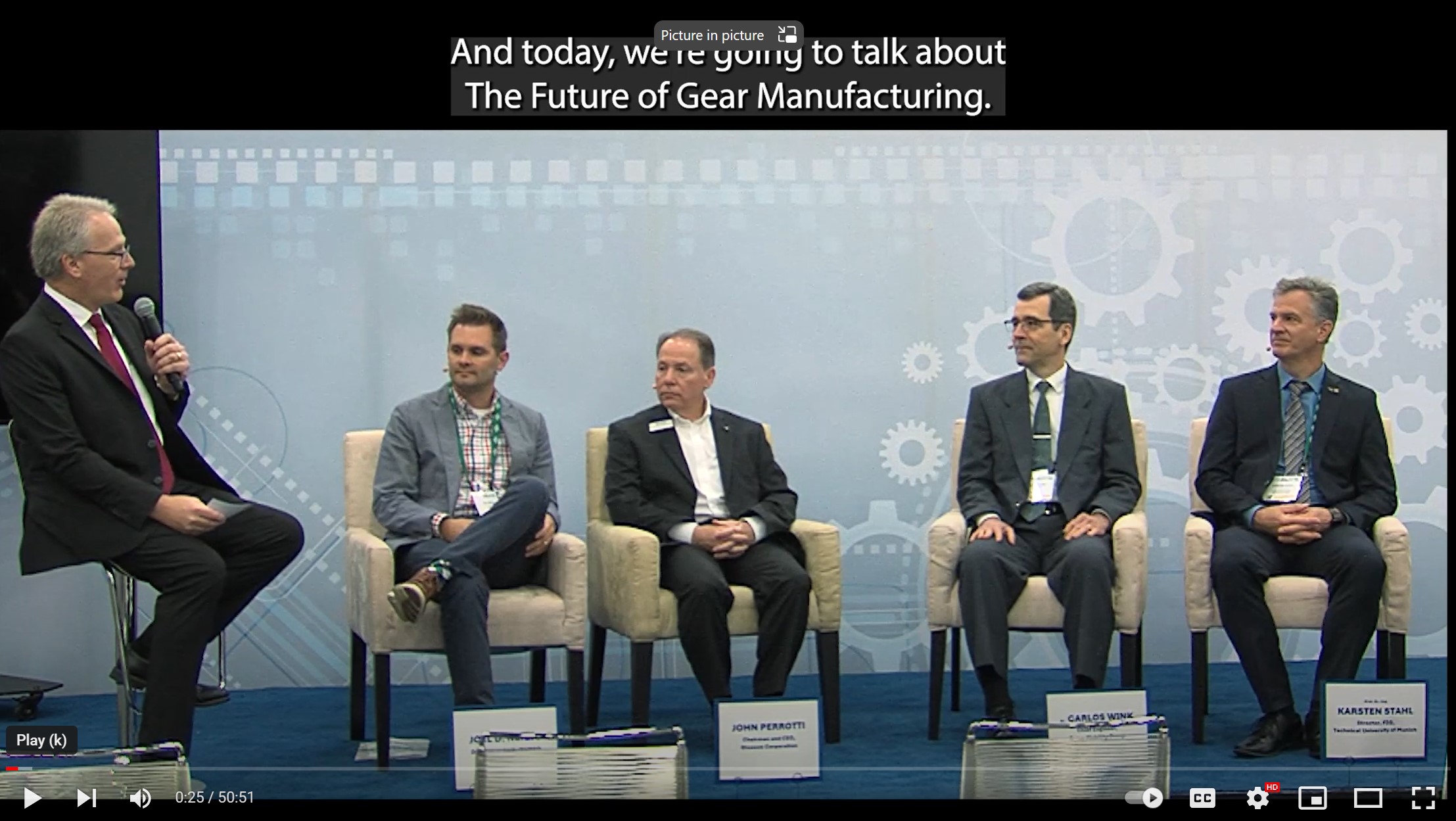Electric Truck: Polished Gears in XXL
KAPP NILES

Image 1: Gear grinding centre KNG 350 flex from Kapp Niles
After cars, heavy commercial vehicles are now also becoming electric. The transformation of drive technology requires gears with larger diameters, larger modules and finer surfaces. It is exactly this challenge that users (parts manufacturers) and equipment suppliers (machine manufacturers) are facing equally.
The market for heavy commercial vehicles is undergoing a transformation. This also has an impact on transmissions. In contrast to passenger cars, noise emissions only play a minor role, but there are plenty of other challenges, such as the frequent load changes in the transmission due to the use of braking energy by recuperation. As a result, the transmission is subjected to loads differently than before and must be manufactured much more precisely. At the same time, the efficiency of the transmission is a top priority: low losses, i.e. low friction, to minimise power consumption and maximise the vehicle's range.
Machines for heavy-duty specialists
Grinding machines from Kapp Niles have been in use at the Rastatt transmission plant, which is part of the Mercedes-Benz plant in Gaggenau, since the 1980s. In the coming years, processes here will be characterised by mixed operation, i.e. the variance will increase. On the one hand, combustion gearboxes will continue to be manufactured, while at the same time there will be a transformation towards new drive technologies such as electric vehicles.
A whole series of Kapp Niles gear grinding machines is used for hard fine machining. A KNG 350 flex was purchased as a new machine especially for large gears. Thanks to the set-up-optimised machine concept, it is suitable for use in the prototype sector up to large series production. With an optional workspace extension and the use of combined grinding worms with widths of up to 200 mm for fine or polish grinding applications, large-module gears for e-mobility can be processed efficiently.
KX 260 TWIN and KX 260 TWIN HS machines with small tools are used for gear shafts. They enable continuous generating grinding with dressable and non-dressable tools. The concept includes two identical workpiece spindles arranged opposite each other on a rotary table. Parallel to the machining of a workpiece, loading and unloading takes place, including the alignment of another part on the second workpiece spindle.
Combined processes: Surfaces at the limits of technical possibilities
Polish grinding has become increasingly established in recent years. In commercial vehicles, the focus is on higher flank load capacity of the gears and improving efficiency. On Kapp Niles machines, special grinding worms with two areas are used for this purpose, one for conventional grinding and one for polish grinding. This allows gears with surface qualities of up to Rz < 1 micrometre to be produced in a single clamping operation. Polish grinding is now being implemented comprehensively for electric gearboxes. Together with Kapp Niles, the process has been further developed in recent years.
The biggest challenge is to keep the surface quality stable in series production. There are fixed parameters for grinding with ceramic-bonded corundum. However, the section for polish grinding is polymer-bonded and therefore deformable. This makes it more sensitive in terms of process technology and requires more measuring effort. In addition, the two segments require more frequent tool changes. Overall, the process is much faster than a separate process.

Image 2: Combined process polish grinding of a large component for e-mobility
No small matter: the larger components
The enlarged working area of the KNG 350 flex has already been mentioned. However, this requires much more than simply scaling up existing technology. Markus Reißenweber, Head of Sales Europe & America at Kapp Niles, remembers: "When the KNG 350 flex was being developed, the focus was already on large components for truck transmissions, but at the time these were components with a diameter of around 300 mm. With the electric drive, gears up to almost 400 mm in diameter were suddenly added. This affects both the workspace and the handling area." At around 30 kg, the components have a higher weight and a larger module. This is a new dimension for Daimler Truck and for Kapp Niles. New processes, such as polish grinding, must be installed, and made ready for series production so that they can run smoothly in three-shift operation. Joint development work was necessary until the quality required in the drawing could be produced in series.
Success with strong partners
Even though there were some challenges, the machines are running, and the processes are stable. The ease of set-up on the Kapp Niles machines plays a particularly important role. The machines have to be set up again every day, as the truck gearbox production is not a classic high-volume production process. The machine concept supports workers and operators in many ways.
Author
Graduate physicist Martin Witzsch
Independent journalist on behalf of KAPP NILES
Contact info for readers
KAPP NILES GmbH & Co. KG
Email: info@kapp-niles.com
Website: www.kapp-niles.com
Related Articles
Related Events
Related Directories
-
October 22, 2024
-
-
Small Bevel Gears Made Easy
October 22, 2024
-
Keeping Up with the Latest Technology
December 12, 2024 -
Chamfering Can Make the Difference—The Choice Is Yours
December 12, 2024
-
Keeping Up with the Latest Technology
December 12, 2024 -
Chamfering Can Make the Difference—The Choice Is Yours
December 12, 2024 -
E.T. Hone Home
October 22, 2024





